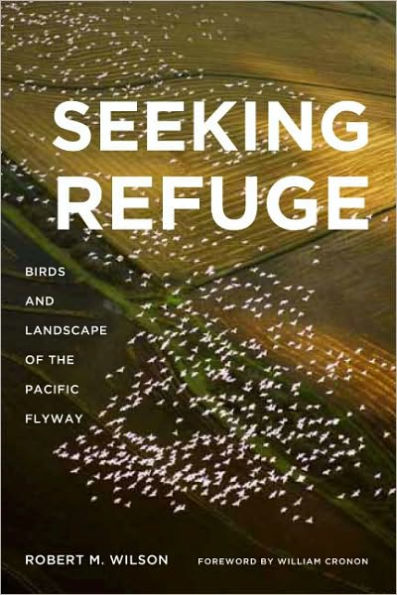
Seeking Refuge: Birds and Landscapes of the Pacific Flyway
320
Seeking Refuge: Birds and Landscapes of the Pacific Flyway
320Hardcover
-
PICK UP IN STORECheck Availability at Nearby Stores
Available within 2 business hours
Related collections and offers
Overview

Product Details
| ISBN-13: | 9780295990026 |
|---|---|
| Publisher: | University of Washington Press |
| Publication date: | 09/22/2010 |
| Series: | Weyerhaeuser Environmental Books |
| Pages: | 320 |
| Product dimensions: | 6.20(w) x 9.10(h) x 1.10(d) |
| Age Range: | 18 Years |
About the Author
Table of Contents
AcknowledgmentsIntroduction1. The Wetland Archipelago2. Elusive Sanctuaries3. Places in the Grid4. Duck Farms5. Refuges in ConflictEpilogueCitation AbbreviationsNotesBibliographyIndexWhat People are Saying About This
"By surveying the complex history of the Pacific Flyway, Robert Wilson has provided us with the portrait of a win—win ecology, one where the needs of a bewildering variety of migratory waterfowl are met even amidst the surging activity, agriculture, and land transformations of humankind. More than this, he has shown us that such reconciliation ecologies are very political indeed. Eschewing environmental romances typical of conservation by stressing historical struggles over land and water, Wilson nevertheless preserves a wonder for a 'natural' world always in—the—making."
"How do American farm policies reshape wild landscapes to produce food for people? How do American wildlife policies reshape wild landscapes to produce habitat for ducks? These may seem like quite different questions, but Robert Wilson's Seeking Refuge brilliantly reveals the interconnections between wildlife refuges and agricultural systems in the West. Wilson explores how the toxic waste water running off farm fields became integral to wildlife refuges. Irrigated agriculture fed a hungry nation while it created wetland habitat for migratory waterfowl. But the results poisoned both chicks and children. Clearly argued and wonderfully written, Seeking Refuge illuminates the intricate connections between wildlife and people in America."
"The author’s skill in examining the interplay between wild birds, their increasingly manufactured habitats, and the varied human institutions responsible for altering them makes for a compelling story that readers will find fascinating."
"Wilson ranges across the entire refuge system of the Pacific Slope in order to observe the dynamics and management challenges associated with the whole flyway. The result is a tour de force of historical and geographical analysis that will surely become a standard work on its subject."
